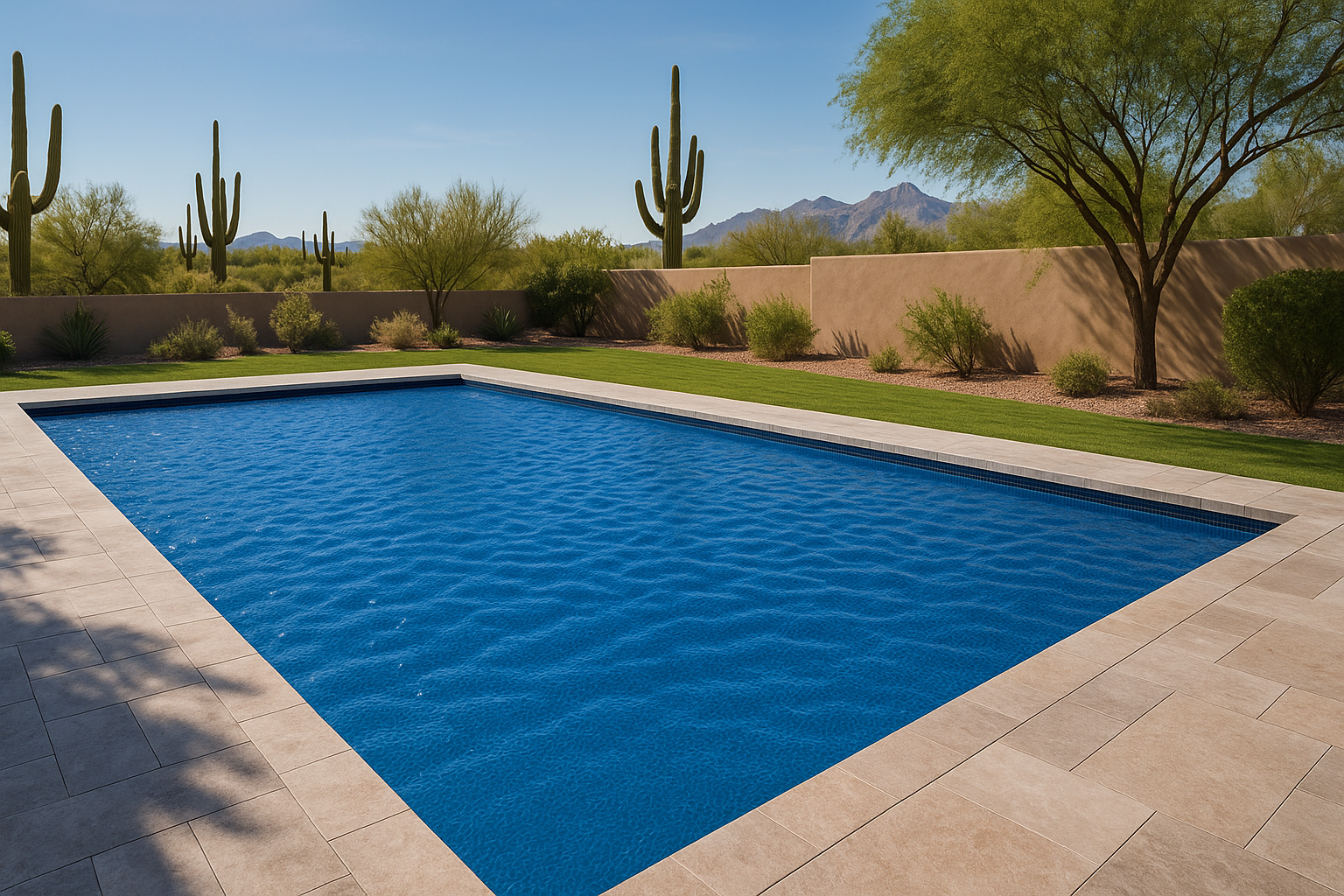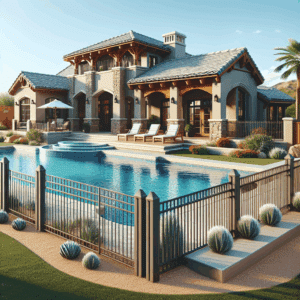Owning a swimming pool in Mesa is pretty much a survival requirement when the summer temps start creeping past 110 degrees, isn’t it? But while that crystal-clear water offers sweet relief, the monthly maintenance costs can feel like a sunburn on your wallet. You might be surprised to learn that one of the most effective ways to stop bleeding cash isn’t a fancy new pump or a magical chemical—it’s a sturdy pool cover.
Contents
- 1 Why Your Pool is leaking Money (Literally)
- 2 The Chemical Burnout
- 3 The Dust, The Dirt, and The Haboobs
- 4 Energy Savings: It’s Not Just About Heating
- 5 Let’s Talk About the “Safety” in Safety Covers
- 6 The Initial Cost vs. Long-Term Gain
- 7 Different Strokes: Types of Covers
- 8 Is It Worth the Hassle?
- 9 Getting the Right Fit for Mesa
Why Your Pool is leaking Money (Literally)
Here’s the thing about living in the Valley of the Sun: the air is dry, and the sun is relentless. You look at your pool and see a backyard oasis; physics sees a giant evaporation machine. Without a barrier, your pool is constantly losing water to the atmosphere.
In Arizona, a standard uncovered pool can lose up to roughly 25,000 gallons of water a year just through evaporation. That is a staggering amount of water. It’s not just about the water bill, though that’s painful enough. When water evaporates, it leaves behind minerals and solids, messing with your water chemistry. You end up refilling the pool, which throws off the chemical balance, forcing you to add more chemicals. It’s a vicious cycle.
Think of your pool like a pot of water on the stove. If you leave the lid off, the water disappears, and you have to keep adding more to keep it full. A pool cover acts exactly like that lid. By simply covering the water surface, you can reduce evaporation by up to 95%. That’s water you don’t have to pay for, and it stays right where it belongs.
The Chemical Burnout
Speaking of chemistry, let’s talk about chlorine. You know that smell of a freshly shocked pool? That’s the smell of money. In Mesa, the UV index is off the charts for a good chunk of the year. The sun’s ultraviolet rays degrade chlorine at a frightening speed. In fact, on a sunny day, an uncovered pool can lose half of its free chlorine in just a couple of hours if it isn’t stabilized properly.
So, what do you do? You buy more chlorine tabs or shock, adding them more frequently just to keep the algae at bay.
A solid or mesh safety pool cover blocks those UV rays. It keeps the sun from eating up your sanitizer. When the cover is on, your chlorine consumption drops significantly because the chemical isn’t fighting a losing battle against the sun. We aren’t talking pennies here; homeowners often see their chemical costs drop by 30% to 60%.
You’re also protecting the cyanuric acid levels (that’s the stabilizer). When you have to drain and refill water constantly due to evaporation and high dissolved solids, you lose expensive stabilizer, too. Keeping the water in the pool keeps the chemicals in the pool.
The Dust, The Dirt, and The Haboobs
If you have lived in Mesa for more than a week, you know about the dust. We have those lovely haboobs that roll through, turning the sky brown and dumping a layer of grit into everything. Even on a normal Tuesday, the wind kicks up dirt, leaves, and debris.
Where does all that junk end up? Right in your deep end.
This leads to two costs:
- Time/Labor: You (or your pool guy) spending hours netting and vacuuming.
- Energy: Your filtration system has to work overtime to clear that particulate matter out.
When you utilize a pool cover, the debris stays on top. It doesn’t sink and decompose, which would otherwise feed algae and spike your phosphate levels. Your filter stays cleaner for longer, meaning fewer backwashes. Backwashing wastes hundreds of gallons of treated water, so avoiding it helps your bottom line.
Energy Savings: It’s Not Just About Heating
Most people think energy savings with Pool Covers only applies if you are heating the pool in the winter. While that is true—covers are incredible insulators—it applies to pumps and filters too.
Because a covered pool stays cleaner, you don’t need to run the pump as long. If you can reduce your pump runtime by even two hours a day because the water is clear, that adds up on your electric bill.
However, if you do heat your pool to extend the swimming season into November or start early in March, a cover is non-negotiable. Heating an uncovered pool is like trying to heat a house with the windows open.
Potential Monthly Savings Breakdown
| Expense Category | Without Cover | With Cover | Estimated Savings |
|---|---|---|---|
| Water Refills | High (Constant topping off) | Very Low | 50-70% |
| Chemicals | High (UV burn-off) | Low (Retained) | 30-60% |
| Energy (Heating) | Very High | Moderate | 50-80% |
| Cleaning Time | Hours per week | Minutes per week | Priceless |
Let’s Talk About the “Safety” in Safety Covers
While we are focusing on costs, we have to address the elephant in the room. Or rather, the risk in the backyard. Standard bubble covers (solar blankets) are fine for heat, but they are dangerous if a child or pet falls onto them. They can wrap around the person, creating a trap.
A proper safety pool cover, like the mesh or solid ones we deal with at Pool Safety Fencing, is anchored into the deck. It’s designed to support weight.
Now, how does this save money? Liability and insurance. Some insurance companies offer discounts to homeowners who install ASTM-compliant safety barriers, including safety covers. It reduces the risk of a tragic accident, which is a financial and emotional cost no one wants to bear. Plus, it keeps unwanted wildlife out. Fishing a drowned rat out of the skimmer isn’t just gross; it ruins the sanitation of the water.
The Initial Cost vs. Long-Term Gain
Honesty time: purchasing a high-quality safety cover isn’t cheap. It’s an investment. You might be looking at the price tag and thinking, “I could just buy a lot of chlorine for that price.”
And sure, you could. But that’s short-term thinking.
A good mesh or solid safety cover can last 10 to 15 years if you treat it right. If you do the math on the water savings, chemical reduction, and energy efficiency, the cover usually pays for itself within the first few years. After that? It’s pure savings.
It’s also about asset protection. The sun in Mesa destroys pool surfaces. Plaster cracks, vinyl liners fade and become brittle, and tile grout erodes. By shielding the pool from the sun when it’s not in use (especially if you close the pool for the winter months), you extend the life of the pool’s interior finish. Resurfacing a pool costs thousands of dollars. Delaying that expense by five years is a massive win.
Different Strokes: Types of Covers
You’ve got options, and picking the right one depends on your lifestyle.
- Mesh Safety Covers: These are super popular here. They are lightweight and stretch tight across the pool like a trampoline. Rainwater can drain through (so no puddles form on top), but debris and sunlight are blocked. They are great for winterizing.
- Solid Safety Covers: These are heavy-duty vinyl. They block 100% of sunlight (goodbye, algae!) and water. You usually need a pump on top to remove rain water, but the pool stays incredibly clean underneath.
- Automatic Covers: The Rolls Royce of covers. You flip a switch, and the pool covers itself. These offer the best daily savings because they are so easy to use, you’ll actually use them every time you get out of the pool. They are pricier upfront but offer the ultimate convenience.
You know what? It doesn’t strictly matter which type you choose, as long as it fits your pool correctly. A poorly fitted cover is about as useful as a screen door on a submarine.
Is It Worth the Hassle?
Some folks worry that putting a cover on and taking it off is a chore. If you have a manual safety cover, you probably won’t be taking it on and off every single day. It’s more of a seasonal solution or for when you go on vacation.
However, even using it seasonally—say, from October to March—saves you six months of maintenance costs. During the swim season, just using a lightweight solar blanket (which is cheap) in addition to your safety fence can help with daily evaporation.
But really, think about the peace of mind. You look out the window, and the pool is secure. The water isn’t evaporating into the dry Arizona sky. The dust storm that just rolled through didn’t turn your pool into a mud pit. It’s a nice feeling.
Getting the Right Fit for Mesa
Your pool is unique. Maybe you have a rock waterfall, a custom kidney shape, or a raised spa. Off-the-shelf covers often fail because they leave gaps. In Mesa, a gap is just an invitation for dirt and critters.
Custom-measured covers ensure that the anchors are in the right spots on your cool decking or pavers. You want tension that is tight enough to bounce a basketball off of (though maybe don’t try that).
If you are tired of watching your utility bills skyrocket and you want to protect your family and your investment, it is time to look into a solution that works as hard as you do.
At Pool Safety Fencing, we understand the specific challenges Mesa homeowners face with the heat and the dust. We can help you find the perfect cover to lock in savings and lock out danger. Give us a call today at 480-771-8026 to discuss your options, or Request A Free Quote online to see how affordable peace of mind can be.




